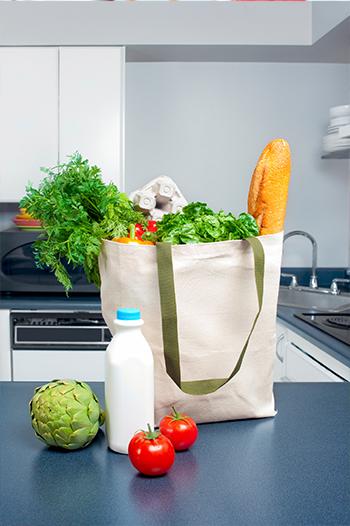Unpacking the shopping from the car
Duration/age

Before getting the shopping out of the car try and estimate with your child how many bags of shopping there will be to carry in. Talk about how many bags each of you will have to carry. Try and predict how many trips back and forth to the car that will be. Talk about which bags are full and which are not. Will the full bags be the heaviest? Place the bags on the ground and ask your child to lift the bags up to identify which bag is heavy and which is light.
Are these all the same or are some heavier and some lighter?
Materials you will need
- Shopping bags
Skills this activity improves
Why does this matter?
This activity helps children to understand that there are different ways we can measure things and that weight / mass is an attribute of measurement. Estimation helps children to make predictions about the likeliness of an event happening, such as when we ask will this bag be heavy or light?
What does this lead to?
This activity helps children to understand that there are different ways we measure and compare objects. It helps children gain an understanding about size and how to navigate and move objects spatially. Estimation helps children to think mathematically and to begin to see patterns and connections about the likelihood of an event occurring.
Language to use
- Inside, outside
- Stay, leave
- Heavy, heavier, heaviest, light, lighter, lightest
- Lift, carry
- Car, boot
- Kitchen, bench
- Shopping, shopping bags, groceries
Questions to use
- Which bag is heaviest?
- Are they all the same?
- Where would that bag need to go?
- Do we need to take that inside?
- Which bag can you manage?
Useful tips
- You might also want to look at the Unpacking the shopping activity.
- Remember to talk to your child in your home language.
More ideas
- Use the kitchen or bathroom scales to measure the weight of the bags.
- Can you make the bags weigh the same?
Variation by age
Birth to two year olds
- Use kitchen scales and blocks for weighing and measuring.
- Build block towers, experimenting with where to place the bigger blocks so they won’t fall over.
- Fill up buckets of different sizes and shapes in the sandpit and compare which is heaviest and which is lightest.
- See how many buckets of sand you can put into a wheel barrow before it is too heavy to push.
Three to five year olds
- Use kitchen scales and blocks for weighing and measuring.
- Create a pulley system in the garden using rope and cogs.
- Make a weight chart for the family.
- Go on a weight search and see how many objects of the same weight you can find.
- Do some cooking to explore different ways you can measure out the ingredients.
Questions to ask
- Which is heaviest? Which is lightest?
- How many can you push?
- Can you do more?
- Do you need less?
Questions to ask
- Will the bigger one weigh more?
- Are they the same or different?
- How could you make them weigh the same?
- What would happen if I took one away?
Language to use
- Heavy, light
- Big, little
- Same, different
- More, less
- Push, pull
Language to use
- Increase, decrease
- Ounce, gram, litre, kilogram, cup
- Change, alter


